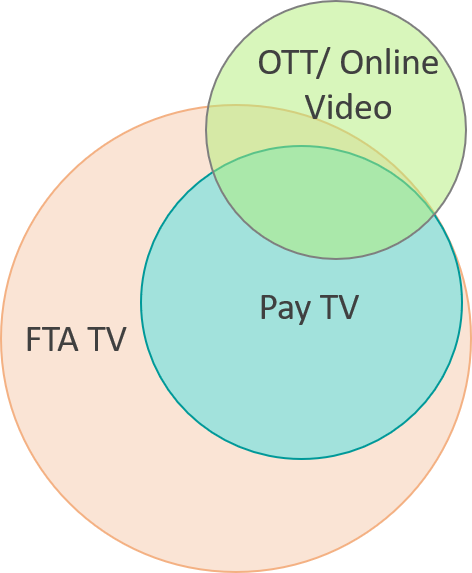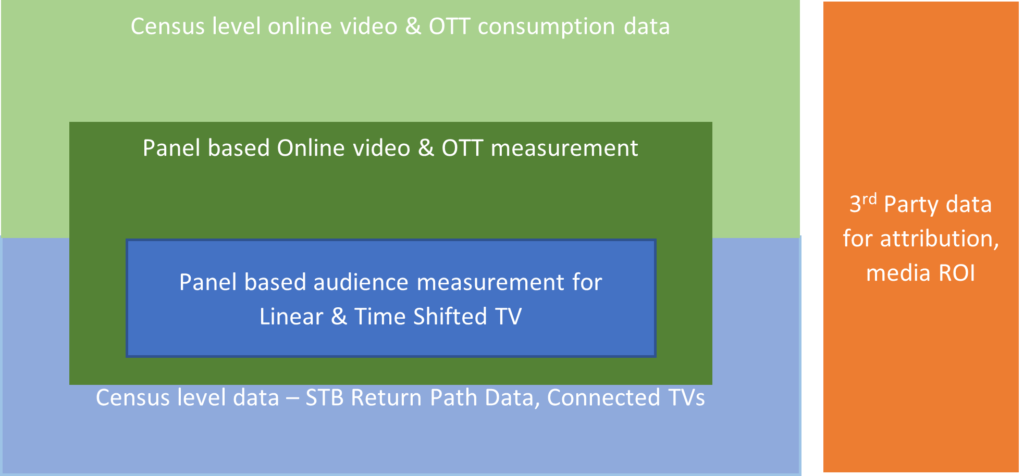
The Need To Invest In An Agile Audience Measurement System
Audience measurement is an essential prerequisite for making media investment decisions. Without any measurement or an incomplete audience measurement, we do not know what the truth is, who is being short-changed and what are opportunities being missed out on.
Perhaps this question would have not been relevant about three decades ago when there were only a few ways in which people at home would access video content and audience measurement using people’s meters was quite easy to implement. Today, we are at a point where the viewer has an unlimited choice:
- With hundreds of linear TV channels distributed freely or as paid channels via cable, IPTV and DTH platforms
- With the ability to catch up on shows that were missed
- Watch premium video content on-demand
- Watch content streamed on to devices other than their TV set
- Watch OTT platforms that allow you to consume video content across devices and on-demand
- User-generated video content on platforms such as YouTube, social media platforms, and TikTok
Audience measurement has been primarily funded by television channels. However, television advertising revenue is no longer growing in many markets or at least not growing at the same pace that it used to. So how should we fund audience measurement? What is all the video consumption that we should measure – for it to be a currency and determine advertising and sponsorship rates. The fragmentation of audiences necessitates that panel sizes to measure total video consumption need to be much larger than they used to be in the past.
Many countries face the challenge of putting together a comprehensive audience measurement system with access to many linear TV channels, increasing consumption of online video, and a growing number of OTT platforms.
Building an audience measurement panel of TV households, TV + Digital households, and only digital households and projecting this to the universe is not easy. We will need census-level data. To make things difficult, the current environment is quite dynamic – which means that with the penetration of free to air, cable, and DTH homes, the OTT subscriber base is constantly changing. However, the universe estimates are may be updated only once in 2 years. The approach for audience measurement must evolve to something more continuous, to reflect a changing environment.

However, the measurement of audiences does not completely address the measurement of advertising exposure with various modes of advertising delivery via addressable TV and connected TV where every household can be served different advertising. The data for the USA indicates that while these account for about 10% of total television advertising, their share is growing.
So, what will an audience measurement currency look like a few years from now? Will panel-based systems completely go away to leave only census-based approaches? Will a single entity measure video consumption across all platforms? Or will there be specialist agencies for each medium?
Audience measurement panels will remain relevant as there is a need to associate viewership with profiles such as socio-economic attributes, demographics, lifestyle, and attitudes. All TV/ Video platforms may not cooperate in currency-type audience measurement and these would have to be accounted for through panels.
While technology may enable a single company to measure total video (across media) at a panel level, it may be better for it to be distributed across specialist agencies. There will be different census level data providers for different media/ platforms (e.g. Devices: Set-top boxes, Connected TVs and platforms: Facebook, YouTube).
The role of any video audience measurement industry body will then be to
- Combine these disparate datasets
- Make a unified report that can serve as a currency
- Audit the panel management and data processing, fusion techniques adopted, and the census level data provided by third parties
- Issue guidelines on how much data is to be used and its limitations (as no such fusion will be perfect)
To many marketers, audience measurement alone is far from adequate – attribution (you can read more about attribution here) of media investments to shifts in brand measures and sales is the norm. Media investments will be increasingly guided not just by campaign reach and frequency but also by factors such as the context in which an ad is placed, attention metrics, and contribution to sales. Audience measurement is one of the inputs to make media investment decisions- not the only input. As video advertising becomes increasingly addressable at a household or an individual level, the discussion on ROI will gain importance. Audience measurement companies should integrate capabilities for the measurement of ROI.
The audience measurement system must become agile for it to remain representative of a rapidly changing video consumption environment. For starters, the universe estimates need to be updated more frequently. (During the COVID-19 lockdown period, March – July 2020, the number of paid OTT subscribers in India increased by 6.8 million, and Netflix’s partnership with JIO is expected to take its paid subscriber base in India up to 4.6 million by the end of this year). The access to connected boxes, connected TVs, and increasing broadband penetration is rapidly changing video consumption behavior.
A more dynamic, comprehensive audience measurement is required but it should remain affordable. It is important that all stakeholders cooperate to build a robust and agile audience measurement system that gives a complete picture.

